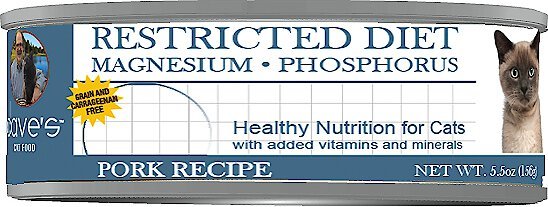Purina Cat Chow High Protein Dry Cat Food, Complete
Give your cat the nutrition she needs for a long, healthy life with you when you serve Purina Cat Chow Complete dry cat food. This delicious recipe is made with real and farm-raised chicken and supplies high-quality protein to support strong muscles. Plus, it has healthy carbs for vital energy and omega-6 fatty acids to help promote a shiny coat. Purina Cat Chow Complete is formulated to nourish cats at every stage of life, from kittens to adult cats, providing them with 25 essential vitamins and minerals to support overall health.
Give your cat the nutrition she needs for a long, healthy life with you when you serve Purina Cat Chow Complete dry cat food. This delicious recipe is made with real and farm-raised chicken and supplies high-quality protein to support strong muscles. Plus, it has healthy carbs for vital energy and omega-6 fatty acids to help promote a shiny coat. Purina Cat Chow Complete is formulated to nourish cats at every stage of life, from kittens to adult cats, providing them with 25 essential vitamins and minerals to support overall health. Wholesome ingredients in this high protein dry cat food give you confidence that your feline friend is getting a quality meal in her dish, and 100 percent complete and balanced nutrition helps to support her overall health and wellness. Give your cat the four cornerstones of nutrition at every feeding, including high-quality protein, healthy carbs, essential fatty acids, and essential vitamins and minerals. With a great-tasting recipe, this Purina Cat Chow dry cat food provides Nutrition to make every moment complete for cats to live their best and brightest.
- FARM-RAISED CHICKEN: This high protein cat food is made with real and delicious farm-raised chicken plus other wholesome ingredients to provide the cornerstones of nutrition
- HIGH-QUALITY PROTEIN: Our wholesome Cat Chow Complete formula is high in protein to help support your cat’s strong muscles and contains healthy carbs for vital energy
- OMEGA-6 FATTY ACIDS: The dry cat food for skin and coat care is formulated with omega-6 fatty acids to help keep your cat looking and feeling her best
- 25 ESSENTIAL VITAMINS AND MINERALS: To support your cat’s overall health, our wholesome cat food contains 25 vitamins and minerals
- ALL LIFE STAGES CAT FOOD: Purina Cat Chow Complete cat food kibble is ideal for cats of all ages, so you can feed it to your feline throughout her life for healthy maintenance
Additional information
| Country of Origin | Made in USA |
|---|---|
| Breed Size | Extra Small, Small, Medium, Large, Extra Large |
| Flavor | Chicken |
| Health Features | Muscle Health, Skin & Coat Health |
| Indoor/Outdoor | Indoor and Outdoor |
| Life Stage | Adult |
| Primary Flavor | Chicken |
| Special Diets | High Protein, Omega Fatty Acids |
| Packaged Height | 22 in. |
| Packaged Length | 4 in. |
| Packaged Width | 14.5 in. |
| Manufacturer Part Number | 1780018495 |










by Nomie
Cats love it. I have 6 cats they all eat the same food . Everyone is happy.
by Lowe
Always a great choice
by Charsilver
The best bargain around. Consistent, well balanced, and inexpensive.
by Gary
Great cat food she loves it!